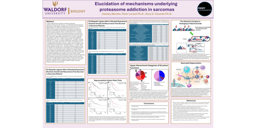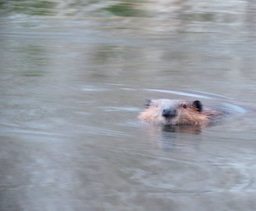Open Access Insights: A Q&A on How Publishing with Scientific Reports Supported My Early Career Researcher Journey
Published in Civil Engineering

Can you tell us about yourself/your research background?
I am Kristina, and I am now a Research Associate at Newcastle University. My background is in Management Information Systems (MIS) and IT Consulting. One experience that shaped me was my research semester at the Tohoku University in Japan, an area that often experiences heavy rainfall and earthquakes. This experience taught me much about the importance of resilience management and community engagement. I wanted to use my knowledge of Geographic Information Systems and interest in emergency management to continue my work and pursue a PhD in this field.
I joined the Centre for Doctoral Training in Geospatial Systems for a PhD funded by Ordnance Survey, Great Britain’s national mapping agency and the Engineering and Physical Sciences Research Council (EPSRC) to work on developing a geospatial data infrastructure to support multi-agencies in incident management.
What was the decision process in choosing where to publish?
Springer Nature has a strong international presence and an excellent reputation. My University professors previously told me about the Scientific Reports journal and collections. When I read different published articles, I knew I wanted to be part of the network of authors.
When Scientific Report had a special issue on “Smart Cities”, we thought this research could contribute to this domain and reach a broad, interdisciplinary audience as we use various data streams and demonstrate how we can support different stages of the incident management process.
How do you think publishing in an open access journal like Scientific Reports has impacted the visibility of scientific research?
Publishing open access helped increase the readership of my work among researchers and practitioners. I was contacted by great people and was able to have interesting conversations that might not have happened otherwise. Springer Nature also provides great communication channels which authors can use to disseminate the broader impacts of the research and interact with a wider network of authors.
Appearing in Scientific Reports’ video campaign is a fantastic opportunity to give people an insight into my work, virtually show them the facilities in Newcastle, and make new contacts.
How has publishing with Scientific Reports influenced your research career?
Publishing in Scientific Reports has been a fantastic opportunity to tell people about my work, get them interested in the domain, and meet different experts working in a similar environment to discuss ongoing research.
The publication was a great catalyst for new collaborative opportunities, broadening my network and creating new possibilities to present my work at in-person seminars, virtual webinars, and conferences. Springer Nature invited me to write a blog post for their “behind the paper” research community. It was a great section to discuss research from a different perspective, highlighting the background and motivation for this work.
What’s next for you/your research journey?
I am curious about new case studies on how we can help understand the impact of extreme weather events, better support emergency services and help communities become more resilient.
I am always looking for new, improved technologies that enable us to better assess the impact of flooding on the environment and integrate it into a geospatial workflow for better situational awareness. In my current role as part of the National Research Hub for Decarbonised Adaptable and Resilient Transport Infrastructures (DARe), one future project is to look at how we can better prepare for the impact of future extreme weather during mass sports events.
What advice do you have for other researchers on maximising the dissemination of their work?
Choose a journal that fits your research area and has a good reputation in your field. Also, look out for special issues as these could provide a good opportunity.
Collaboration between different research institutions, and also with practitioners, is very valuable because it allows you to benefit from knowledge sharing and the dissemination of your work to a wider network.
I recommend informing your network about your published work on social media, e.g. through a summary of your key findings, visuals, or even short videos. When you attend events and interact with other researchers, mention your work and demonstrate how it fits into your overall project portfolio and expertise.
How does your research contribute to the UN’s Sustainable Development Goals?
The UK Government Resilience Framework states that resilience is a “whole of society” approach. The hazard of flooding is considered so severe that the United Nations (UN) committed to preventing damage caused by flooding in the 2015 Sustainable Development Goals. In line with SDG 11, to make cities inclusive, safe, resilient, and sustainable, smart cities require the ability to better respond to and be prepared for unforeseen events.
Through geospatial technology and a multi-agency incident management approach, this research demonstrates how we can support the UK in emergency planning, responding to emergencies and contributing to greater resilience.
Watch the videos:
Follow the Topic
-
Scientific Reports

An open access journal publishing original research from across all areas of the natural sciences, psychology, medicine and engineering.
Related Collections
With Collections, you can get published faster and increase your visibility.
Reproductive Health
Publishing Model: Hybrid
Deadline: Mar 30, 2026
Women’s Health
Publishing Model: Open Access
Deadline: Feb 14, 2026





Please sign in or register for FREE
If you are a registered user on Research Communities by Springer Nature, please sign in